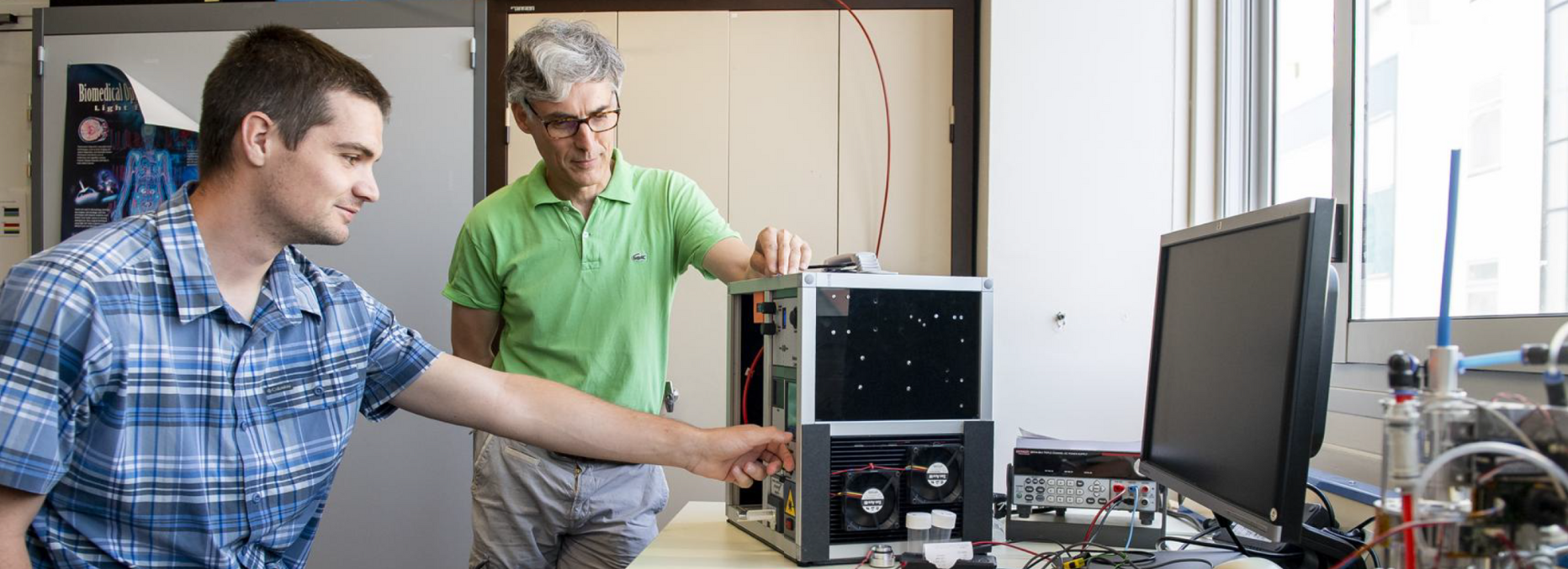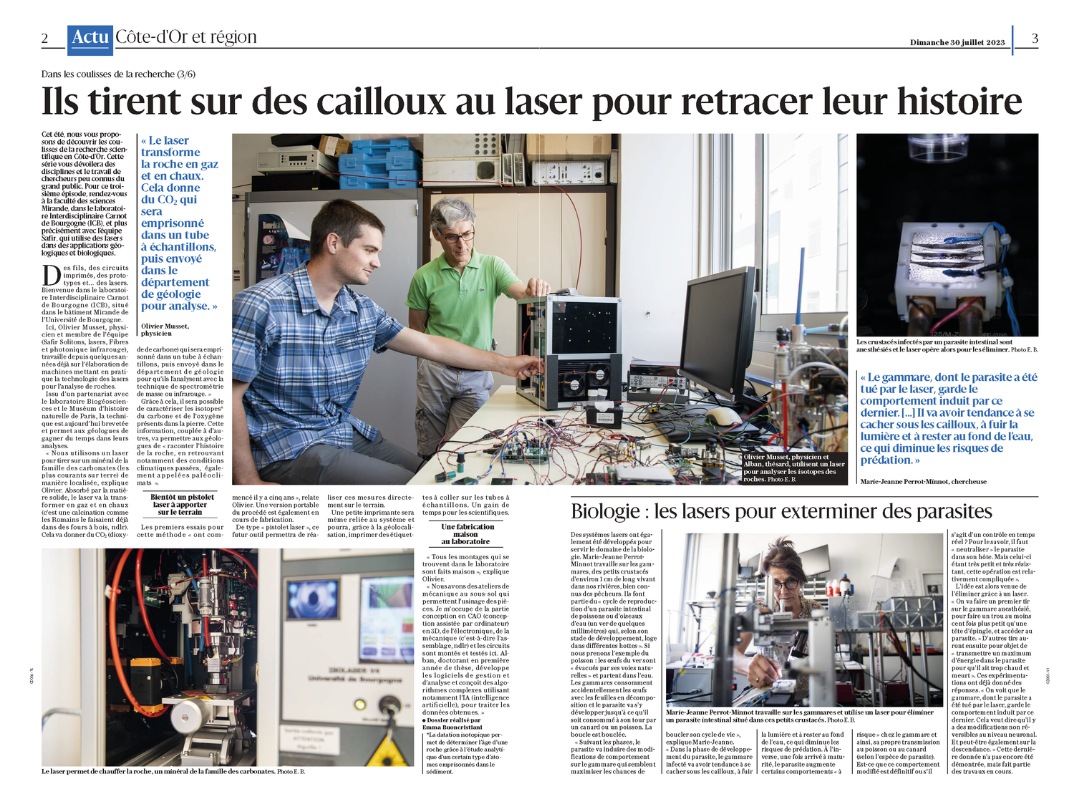Behind the scenes of the research: “They shoot stones with lasers to trace their history”

The SAFIR team (Photonics department) of the Interdisciplinary Carnot de Bourgogne laboratory (ICB) presented their research work in the “Behind the scenes of research” section of the daily newspaper Le Bien Public.
This team uses lasers in geological and biological applications. Olivier Musset, physicist and member of the team, is working on the use of laser technology to analyze rocks. In collaboration with the Biogéosciences laboratory and the Natural History Museum of Paris, they have developed a patented method allowing geologists to quickly analyze rocks.
The technique consists of using a laser to target a mineral from the carbonate family, the most common on Earth. The laser transforms the mineral into gas and lime by calcination, producing carbon dioxide (CO2). This CO2 is collected in a sample tube, then analyzed with mass spectrometry or infrared techniques to characterize the carbon and oxygen isotopes present in the rock. This information helps geologists reconstruct the history of the rock, including past climatic conditions (paleoclimates).
The first tests of this method began five years ago, and a portable version of the tool is under development. This version will resemble a “laser gun” allowing measurements in the field. The portable tool will be equipped with a printer to generate geolocated labels to stick on the sample tubes, which will facilitate the work of scientists in the field.
The SAFIR team carries out all the necessary assembly in their laboratory, with mechanical workshops for the manufacture of the parts. Olivier Musset takes care of 3D design, electronics and mechanics, while Alban, a doctoral student, develops management and analysis software, including complex algorithms based on artificial intelligence, to process the data obtained.
- kc_data:
- a:8:{i:0;s:0:"";s:4:"mode";s:2:"kc";s:3:"css";s:0:"";s:9:"max_width";s:0:"";s:7:"classes";s:0:"";s:9:"thumbnail";s:0:"";s:9:"collapsed";s:0:"";s:9:"optimized";s:0:"";}
- kc_raw_content:
- [kc_row use_container="yes" _id="448085"][kc_column width="12/12" video_mute="no" _id="823736"][kc_column_text _id="933414"]
The SAFIR team (Photonics department) of the Interdisciplinary Carnot de Bourgogne laboratory (ICB) presented their research work in the “Behind the scenes of research” section of the daily newspaper Le Bien Public.
This team uses lasers in geological and biological applications. Olivier Musset, physicist and member of the team, is working on the use of laser technology to analyze rocks. In collaboration with the Biogéosciences laboratory and the Natural History Museum of Paris, they have developed a patented method allowing geologists to quickly analyze rocks.
[/kc_column_text][kc_spacing height="20" _id="491101"][/kc_column][/kc_row][kc_row use_container="yes" _id="34510"][kc_column width="45%" _id="7767"][kc_single_image image_size="full" _id="654174" image_source="media_library" image="43497"][kc_spacing height="10px" _id="985607"][kc_column_text _id="10145"] [/kc_column_text][/kc_column][kc_column width="5%" _id="525612"][/kc_column][kc_column width="50%" _id="798838"][kc_column_text _id="892414"]The technique consists of using a laser to target a mineral from the carbonate family, the most common on Earth. The laser transforms the mineral into gas and lime by calcination, producing carbon dioxide (CO2). This CO2 is collected in a sample tube, then analyzed with mass spectrometry or infrared techniques to characterize the carbon and oxygen isotopes present in the rock. This information helps geologists reconstruct the history of the rock, including past climatic conditions (paleoclimates).
The first tests of this method began five years ago, and a portable version of the tool is under development. This version will resemble a “laser gun” allowing measurements in the field. The portable tool will be equipped with a printer to generate geolocated labels to stick on the sample tubes, which will facilitate the work of scientists in the field.
The SAFIR team carries out all the necessary assembly in their laboratory, with mechanical workshops for the manufacture of the parts. Olivier Musset takes care of 3D design, electronics and mechanics, while Alban, a doctoral student, develops management and analysis software, including complex algorithms based on artificial intelligence, to process the data obtained.
[/kc_column_text][/kc_column][/kc_row]

